WORLD TRAVEL NEWS ARTICLE
CRETE, GREECE
Homer once said of Crete, “Out in the dark blue sea there lies an island called Crete, a rich and lovely land, washed by the waves on every side, densely peopled and boasting ninety cities“. That quote probably just about sums up the island today.
Crete is the only one of the Greek Islands that’s not part of a group, and this distinction gives it a slightly elevated status to that of some of its equally popular and charming neighbours. It’s the largest of the Greek Islands, and some would also say the most diverse. Crete may not rival Athens for popularity with sightseers but still has its own equally fascinating history along with picturesque coves, bays and peninsulas, and of course those heavenly sandy beaches.
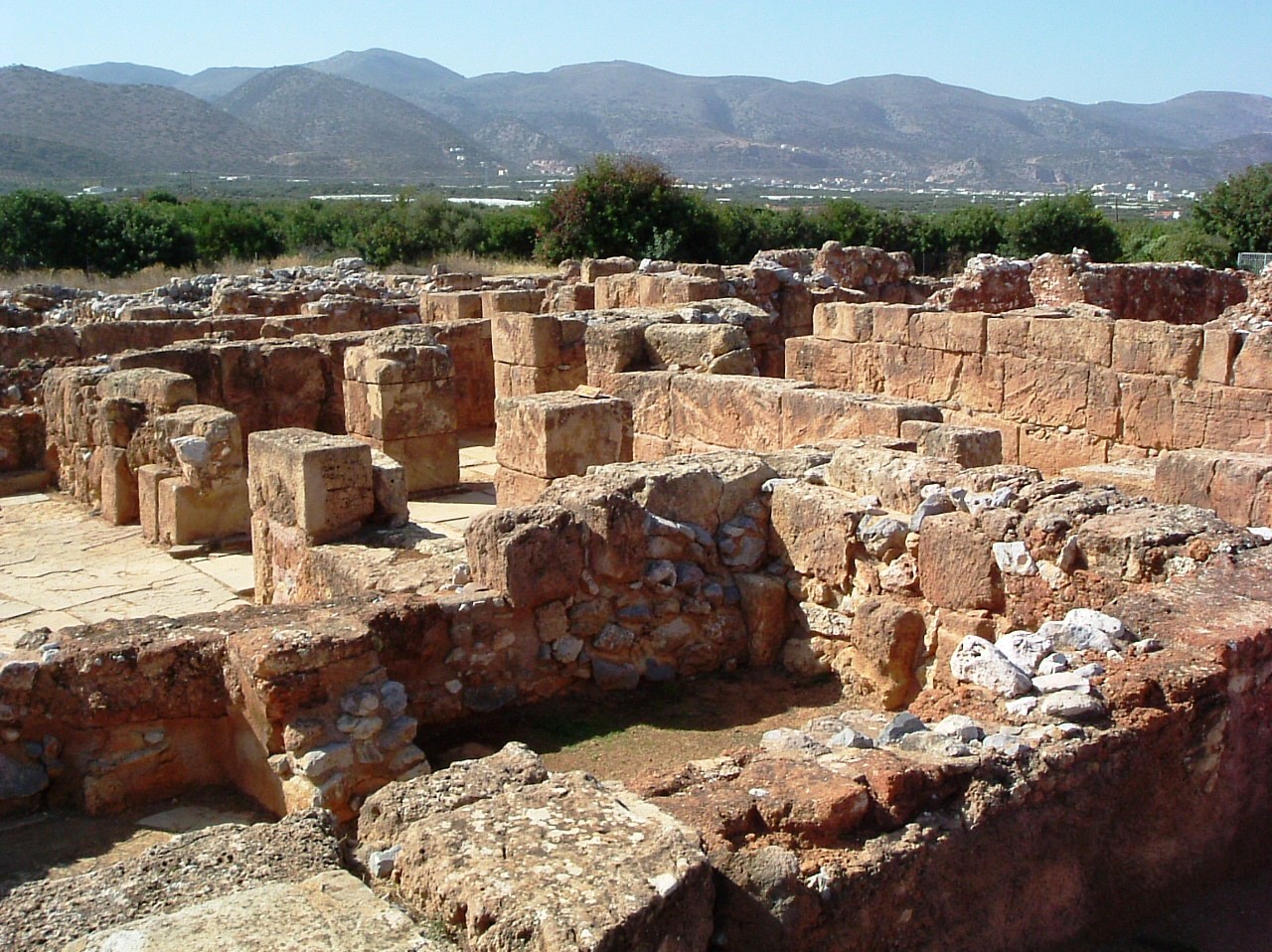
Malia ruins
The home of the Minoan civilisation, Crete has been the source of some pretty important archaeological finds at sites like Knossos, Phaistos and Gortys, and these attract plenty of tourists, all helping to make Crete one of the most popular destinations in Europe. Crete plays host to almost a quarter of Greece’s tourists, which does mean that some of the northern coast has been somewhat taken over by hotels and cheap package holidays, yet you can still escape from the commercialism. Hire a car and drive off around the island and you’ll find stunning views of coastal plains or rugged mountains. You might prefer to spend your time sampling the delights of one of the busy metropolitan cities or maybe while away the hours in a small taverna in one of the quaint, picture-postcard hillside villages. Either way, you’re unlikely to be disappointed.
History
Crete is considered to be the centre of the ancient Minoan civilisation, a Bronze Age culture so sophisticated that they even had a large navy. The Minoans were badly affected by a massive volcanic eruption on the nearby island of Santorini in 1450 BC, and by the late Bronze Age, were superseded by Mycenaeans from the Greek mainland.
Crete, occupied by the Romans from AD 69–330 became wealthy during this and the Byzantine era. The Cretan kingdom reached its greatest power during the 16th century. This was followed by a series of revolts against the Turks during the 19th century, which led to war in 1897 between Greece and Turkey. In 1912, Cretan representatives were included in the Greek parliament, and in 1913, following the Balkan Wars, Crete officially became part of Greece.
Crete was invaded by German troops during the Second World War, although the Allied troops and the people of Crete put up a spirited resistance. Many Cretans were executed for initially resisting the Germans and the cities of Chania and Heraklion were bombed so heavily that the destruction is still evident..
The history of Crete is infused with many tantalising myths – including the story of the King of Crete, Minos, who refused to sacrifice a bull to the Greek gods, and was punished by Poseidon, who made Minos’ wife fall in love with a bull and create the mythical Minotaur.
Getting There
Crete has two airports. A third one in Sitia (eastern Crete) is due to become operational for charters soon.
Heraklion Airport is the largest and is located about 5 kilometres east of the city.
Chania Airport is better for the west of the island, located on the peninsula of Akrotiri, about 14 kilometres from Chania. There is no public transport from the airport to the city though.
There are two main harbours in Crete – Heraklion harbour and Souda Bay harbour. For current visa requirements visit www.projectvisa.com
Food
Cretans love their fruit and vegetables, and the cuisine of the island revolves around fresh produce. Dishes tend to be flavoured with lots of herbs, and specialities include local pies (sfakia) that are often made with lamb, occasionally chicken or cheese. Smoked pork is a Cretan delicacy, as is the local version of the Greek salad, which can be quite substantial. Other menu options that may or may not be as popular with visitors include local snails and rabbit.
Being an island means that of course, fish is a speciality, but it’s not cheap. In Crete, fish is seen as a luxury food due to reduced fishing stocks in the Mediterranean.
Money
The Greek currency is the Euro. You can exchange all foreign currencies at most banks, or bureaux de change, but keep an eye on the exchange rates as they tend to fluctuate from one bank to another. All major credit cards are widely accepted, as are traveller’s cheques in most currencies. For the latest exchange rates visit www.xe.com
Greek banks charge a flat commission rate for cashing traveller’s cheques, and you can avoid extra fees by taking them in Euros, Pounds Sterling or US Dollars.
Banks are generally open from 8:00am to 2:30pm Mondays to Thursdays, and close at 2:00pm on Fridays. Banks on the larger islands such as Crete sometimes stay open during the afternoon and even into the evening for currency exchange during the tourist season.
Shopping
In the towns of Heraklion, Rethymno and Chania you can find local specialities such as the famous Cretan honey, locally produced wines and cheeses. For non-edible purchases, look out for shops selling leather goods, copper and bronze, terracotta and wooden items.
Local embroideries and handmade wooden carvings are available all over the island, but some of the best examples are in the villages of Zaro, Kritsa, Anogia and Zoniana
In the big towns you can find pretty much anything you’d expect to find on the high street, and the best jewellery shops are in Agios Nikolaos, Rethymno and Heraklion where you can buy contemporary jewellery as well as some stunning (and well made) copies of ancient Minoan and Byzantine ornaments and trinkets.
There is a local market every day in Heraklion selling local produce as well as clothes, shoes, textiles, rugs, and household items – there are also plenty of food stalls selling souvlaki, giros and drinks. It’s a lively and colourful market that’s recommended by locals and visitors simply for the atmosphere.
Nightlife
Crete has one of the most vibrant night scenes of all the Greek islands. The main towns of Heraklion, Chania and Rethymno all have a lively nightlife, and then of course there’s Malia, a darling of the 18–30 and package tour crowd, but good for a night on the town.
The nightlife on Crete can be anything you want it to be – a night at a Brit bar or a mad foam party – or a slightly less noisy but just as fun experience of traditional Cretan music and dancing. The twin resorts of Hersonissos and Malia, that lie along the east coast from Heraklion, are the two main hot spots for party animals, and as a result both resorts are packed to bursting with bars and discos catering for young clubbers.
The out-of-control reputation of some of the tourists has forced a police clampdown in recent years but there’s still a big party atmosphere that comes complete with half-dressed bar staff in bars that open at 8pm and stay open until the early hours of the morning. The majority of bars and clubs are in the centre of Malia’s new town. There’s only one gay bar in Malia and it’s five minutes out of town.
If drinking till dawn is something you’ve grown out of, the more relaxed atmosphere of Chania might appeal. Here, you can join the locals in their early evening stroll and then head off for a ride in a horse-drawn carriage by the harbour. There are plenty of bars around the inner harbour and old quarter and from July to September there's also an arts festival with classical music, jazz concerts and traditional music and dancing.
The capital Heraklion (also known as Iraklio) also hosts a big arts festival in the summer laying on entertainment that could be anything from ancient Greek or Renaissance drama to classical ballet or traditional Greek music. Most of the events take place on the roof of the Koules Venetian fort or at the Kazantzakis Garden Theatre and the Hadzidaksis Theatre.
Places to Go in Crete
Heraklion is the capital of Crete, a dynamic city with a lively centre that comes complete with upmarket boutiques, restaurants and cafés. The waterfront has been undergoing some well-needed redevelopment, and this is adding to the allure of the city with efforts being made to accentuate the city's rich cultural history. The core of the city is enclosed by the Venetian wall, which includes seven bastions. In the Martinengo Bastion, you can see the grave of Nikos Kazantzakis, Crete's famous literary son who penned many great works including Zorba the Greek, complete with the inscription, ”I hope for nothing. I fear nothing. I am free.”

Typical street scene on Crete
The Heraklion Archaeological Museum is where you will be able to see some of the most important finds from the island’s ancient Minoan civilisation. It’s classed as one of the world's great museums, showcasing a culture that simply didn’t exist anywhere else.
You’ll need a good couple of hours to appreciate it properly, and if you are a serious history lover you could easily spend longer there. The museum has been undergoing a major restoration, and the new and improved museum is due to open by summer 2010. It’s still definitely worth a visit before then just to see the highlights of the collection displayed in a temporary exhibition.
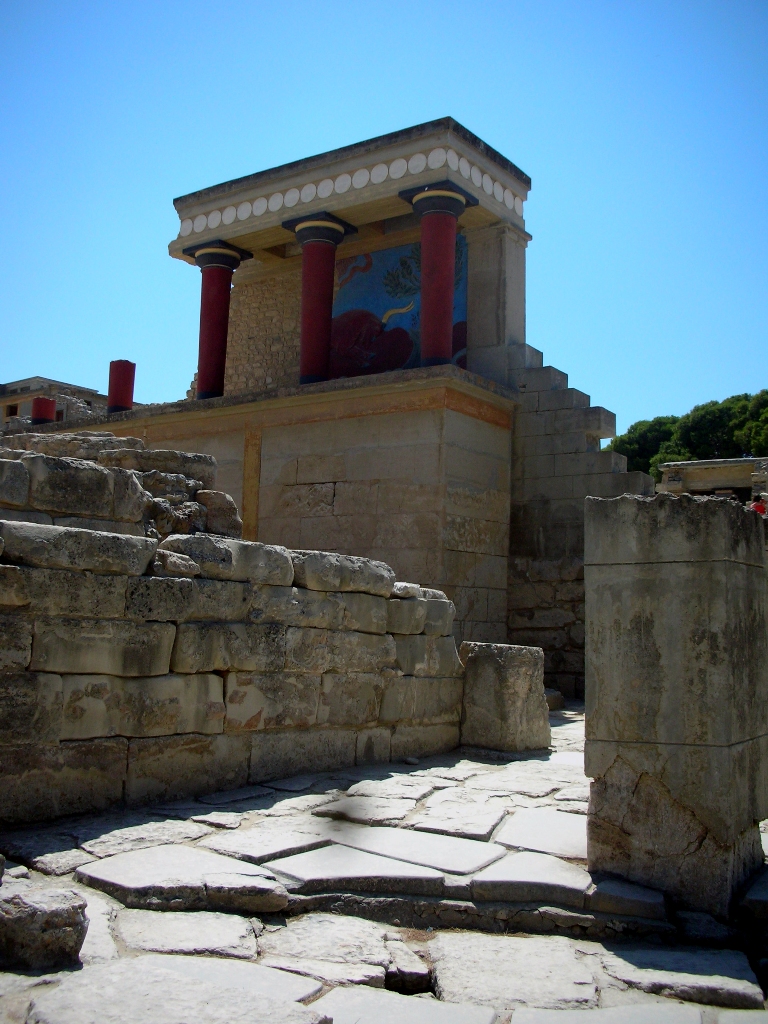
The Palace at Knossos
Knossos
Knossos was once the capital of Minoan Crete and the Palace of Knossos is the island’s major tourist attraction. According to Greek legend, King Minos is reputed to have lived here while keeping his pet half-man half-bull in an underground labyrinth. The original palace was built in around 1900 BC but was restored on several occasions, until it was finally destroyed by fire and abandoned. The ruins of Knossos were uncovered in the early 20th century by the British archaeologist Sir Arthur Evans, who spent 35 years painstakingly excavating and reconstructing parts of the palace.
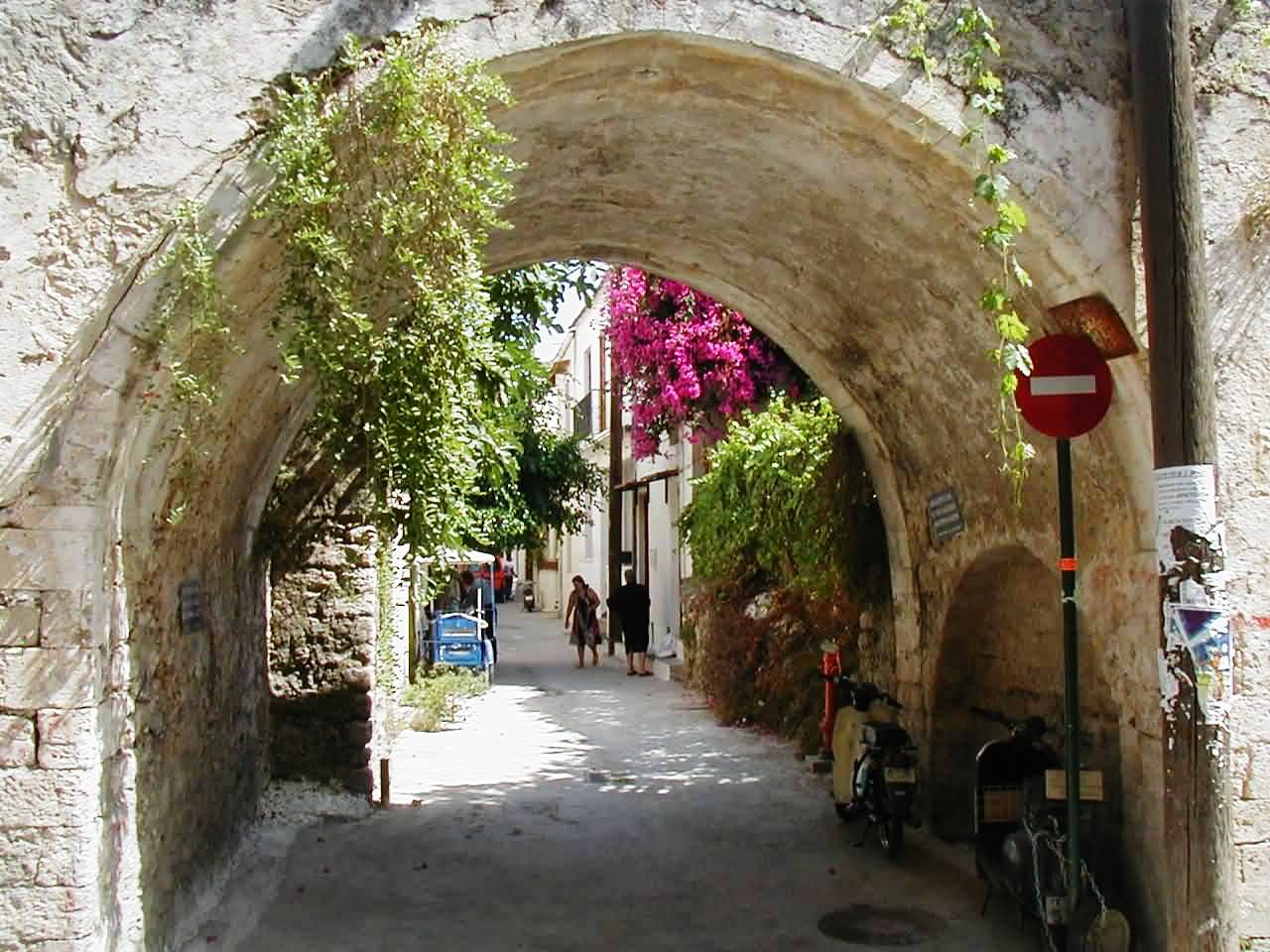
Rethymno
Rethymno
Rethymno is Crete’s third-largest town and also one of the prettiest, with its charming harbour and huge Venetian fortress. For picture opportunities and wow factor, visit the Venetian-Ottoman quarter and take in the maze of narrow streets, complete with ornate Venetian monuments, wood-balconied houses and minarets. Worth taking your time over are the Kara Musa Pasha Mosque in the old quarter with its vaulted fountain, and the Nerantzes Mosque, which was converted from a Franciscan church in the 17th century.
The 16th-century Fortezza is found on the site of the city's ancient acropolis, and although it was once home to many impressive buildings, these days only a church and a mosque remain. You can explore some of the old ruins there, or just soak up the great views from the ramparts.
The Centre for Byzantine Art is another must see, a fascinating selection of exhibitions and workshops that also features a terrace café with some great views of the old town.
Rethymno holds a Renaissance Festival in July and August and puts on some quality entertainment, including Greek dramas, concerts, films and art exhibitions. Many of the performances take place in the Fortezza. For entertainment of a different kind, the annual wine festival takes place in the public gardens and involves music and dancing as well as sampling the local wines.
Chania
The Venetian Harbour of Chania is absolutely gorgeous, and the town is characterised by this and its charming old port, narrow shopping streets and relaxing waterfront restaurants. The best parts of Chania are around the harbour. The town is divided into neighbourhoods – of which four old quarters have survived, complete with some impressive buildings.
The Municipal Market is housed in an imposing building, and is considered one of the finest indoor markets in Europe. The central bastion of the town had to be demolished to make way for it, and the building was inaugurated in 1913 as part of the celebrations of the unification of Crete with Greece.
It’s also worth a stroll down to the public gardens, which were designed by the Turks in 1870. The unusual clock was added in the 1920s. If you feel a bit peckish you can stop off in the garden cafe, and there’s also an open-air auditorium, small animal enclosure and even a children’s library.
Malia
Malia isn’t all about clubs and bars, it’s surrounded by an area of great natural beauty and is said to have one of the best beaches in Crete, a 5 km stretch of golden sand which slopes lazily into the clear blue sea. Malia consists of two distinct parts; the old and the new town, helpfully separated by the main road. If you want lively, you need to head to the new town, but for narrow streets, traditional tavernas and little coffee shops, just cross the road into the picturesque old town.
The old town is a maze of narrow streets and four gorgeous Byzantine churches. Next to one of them, the Panagia Galatiani, is the only surviving water well in the old town.
For sun seekers and sporty types, Malia is a well developed resort that caters for all kinds of activities at the water sports centre, as well as offering no less than four water parks nearby – Water City in the mountains above Anopolis, Acqua Plus between Kastelli and Hersonissos, Star Beach on the borders of Stalis and Hersonissos and Malia Slides in the town itself.
The Minoan Palace of Malia is 3 kilometres outside of the town, and the third largest Minoan Palace in the whole of Crete. It was once the Minoan King’s summer palace, proving that Malia was a big tourist resort even for ancient civilisations!
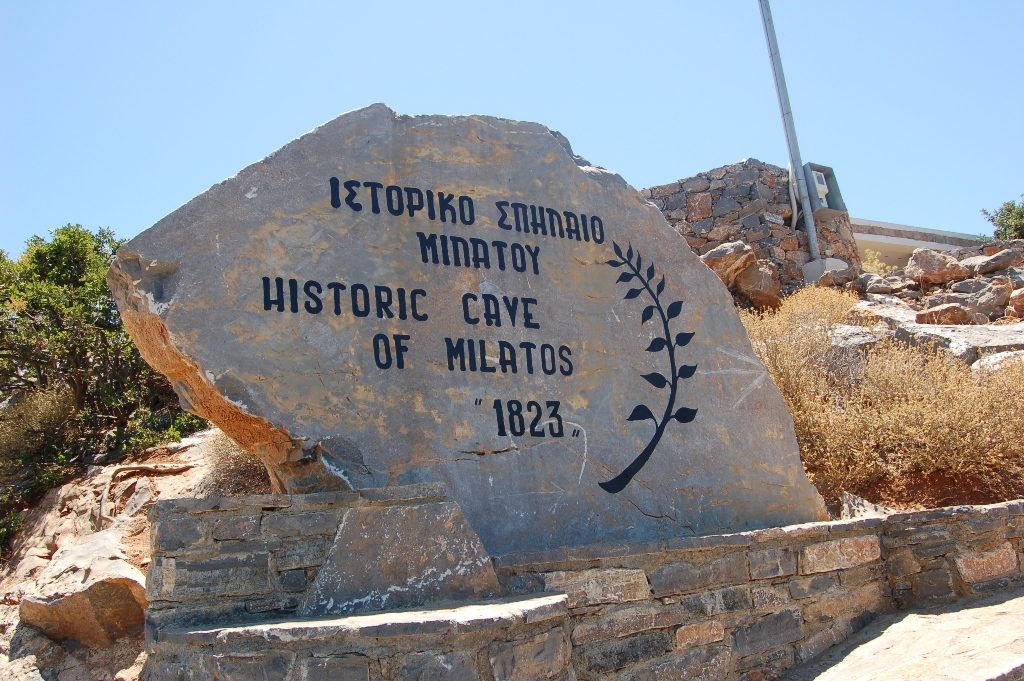
The Milatos Caves
The Milatos Caves are in the mountains, and to get to them you have to be brave and take a narrow winding footpath above the tiny village of Milatos, 20 minutes away from Malia.
Inside the caves you won’t just find stalactites or even bats, but a tiny little church built in 1935. The church was built there to commemorate the tragic events of 1823 – when local people were forced to hide in the caves to avoid the invading Turks. They stayed there for 15 days, but were driven out by hunger and thirst – only to be killed or sold into slavery.
Samaria Gorge
The Samaria Gorge, near Chania, is the second most popular tourist spot in Crete and a haven for serious walkers and hikers. The gorge was declared a national park to protect the endangered kri kri – a rare Cretan wild goat. There used to be a small village in the Gorge, but everyone left in 1962 – the year that the gorge was declared a national park. The gorge is in fact the longest ravine in Europe, and if you’re thinking of taking the walk you need to allow yourself between five and seven hours. Make sure you wear comfortable shoes and take something to eat and drink with you – the walk isn’t for the faint hearted!
The best time to walk the gorge is in the spring, and if you get into the journey and realise that you were being a little adventurous thinking you could manage the whole trek, don’t panic as there are forest guards with donkeys who are used to helping out over-tired tourists and can take you back to where you started. There are guards all along the gorge, and if you’re caught short there are toilets too.
Lasithi Plateau
The stunning mountain-fringed Lasithi Plateau is well worth a day trip. The Plateau consists of a vast plain of orchards dotted with a staggering 7,000 or more windmills as well as some really pretty villages including Psychro – from where you can walk to the famous Dikteon Cave, reputedly the birthplace of Zeus, the greatest God in Greek mythology.
The Palace of Phaistos
The Palace of Phaistos is another important Minoan site, which is set in a spectacular location on a ridge that overlooks the south coast of the island. At the nearby ancient city of Gortyna you can see Europe’s oldest written law code, which was inscribed on a set of stone blocks in the 5th century BC.

Phaistos
Elafonissos
Elafonissos (or Elafonissi) is a small islet that is connected to Crete by a shallow reef that can only be crossed when the sea is calm. The islet can be reached by boat from Paleohora – or if it’s calm you can travel over by car from the village of Vathi up to the point where you get out and cross the reef.
Elafonissos is lucky enough to have a fantastic beach with pink coral sand and crystalline waters. Although it was deserted for some time, the islet has become popular with sightseers and so it gets a little crowded during the tourist season which can spoil the atmosphere somewhat, but it’s still worth a visit, though.
You may also like to read
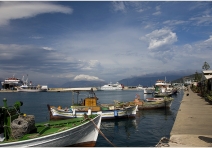
KEFALONIA, GREECE
Kefalonia is where Tour-smart film fans will find the beaches featured in ‘Captain Corelli’s Mandolin’.

GREECE - CEPHALLONIAN SURPRISES
Contributing to Tour-smart's own collection of Greek Island descriptions, Mike Hampshire adds his personal take of Cephallonia.
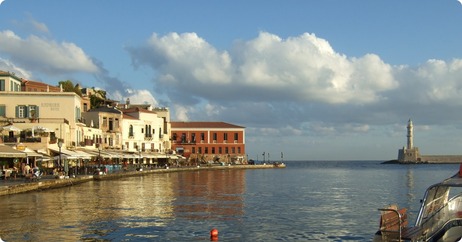
Comments